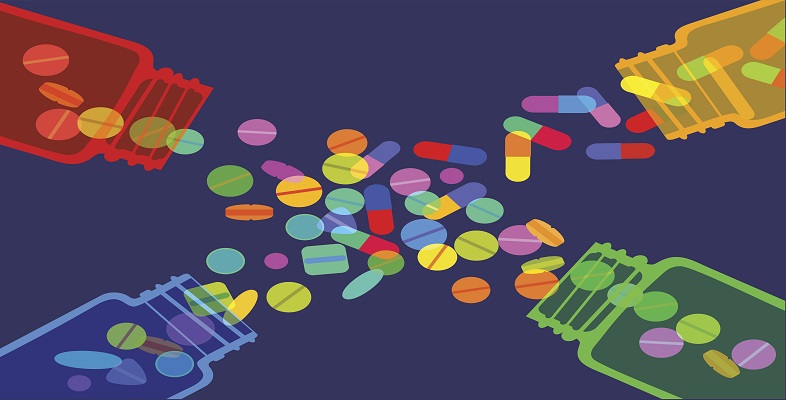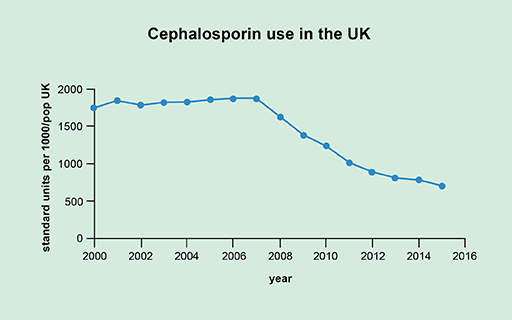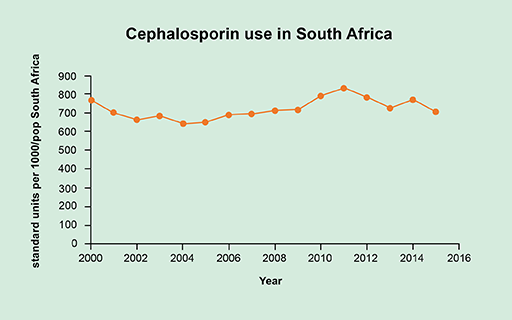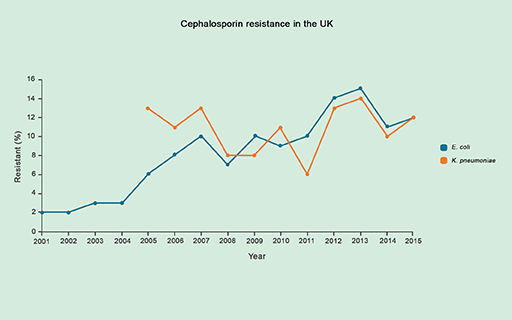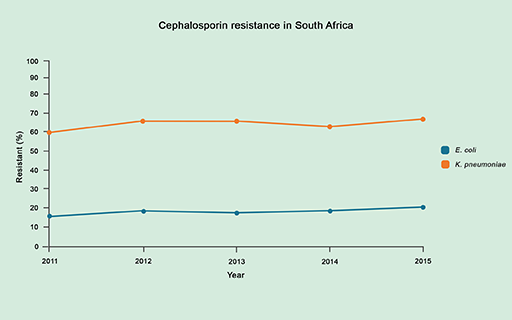5 Case study: the link between antibiotic use and antibiotic resistance
In this case study you will further explore the link between antibiotic use and antibiotic resistance, by looking at a specific class of antibiotics, the cephalosporins.
Cephalosporins are a group of ß-lactam antibiotics which target cell wall synthesis. Discovered in the late 1940s, cephalosporins have a wide range of activity, have few side effects, and are one of the most commonly used antibiotics in the world.
Activity 7 Finding out about cephalosporins
The images provided for this case study are taken from Resistance Map, a web-based programme that allows antibiotic use and antibiotic resistance data from different countries to be compared.
Study Figures 6a and 6b which compare cephalosporin use from 2000 to 2015 in the UK and South Africa. Then answer the following questions.
- a.How did cephalosporin use change over time in each country?
- b.Which country had the lowest consumption of cephalosporins in 2015?
- c.What factor is most likely to have accounted for the change in cephalosporin consumption in the UK since 2007?
Discussion
- a.Over the period 2000 to 2015, antibiotic consumption decreased in the UK and remained relatively stable in South Africa.
- b.In 2015, the UK and South Africa had similar levels of cephalosporin consumption – about 700 standard units per 1000 population.
- c.The fall in cephalosporin consumption use in the UK since 2007 was probably due to a switch in prescribing away from cephalosporins towards other antibiotic alternatives.
Now study Figures 7a and 7b which compare cephalosporin resistance among K. pneumoniae and E. coli clinical isolates in the UK and South Africa. Then answer the following questions.
- a.What was the resistance pattern for each organism in each country?
- b.Which country had the highest levels of cephalosporin resistance for these bacterial species in 2015?
Discussion
- a.In the UK, cephalosporin resistance remained relatively stable in K. pneumoniae over the period 2000–2015, but increased from about 2% to 12% in E. coli.
In South Africa, there was a slight increase in cephalosporin resistance in both K. pneumoniae and E. coli from 2011 to 2015.
- b.Levels of cephalosporin resistance were higher in South Africa than in the UK – considerably so for K. pneumoniae.
What conclusions, if any, can you draw from the data in Figures 6 and 7?
Discussion
The link between antibiotic use and antibiotic resistance is complex and factors other than the amount of antibiotics used can affect the levels of resistance found. For example, the underlying mechanism by which the bacterial population becomes resistant to the antibiotic and the frequency at which resistance spreads is also important. You will learn more about this in Weeks 3 and 4.
Note also that the resistance data in Figures 6 and 7 are for clinical isolates from healthcare settings, whereas antibiotics are increasingly used for non-therapeutic purposes such as agriculture.
In the next section you will explore what the rising global levels of antibiotic resistance mean for us now and in the future.
